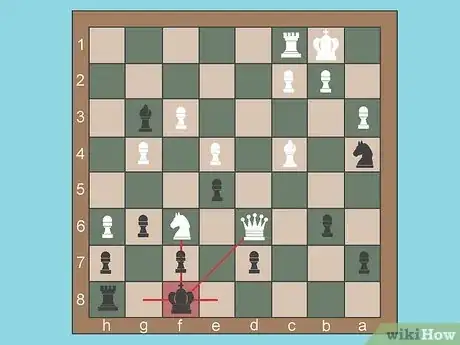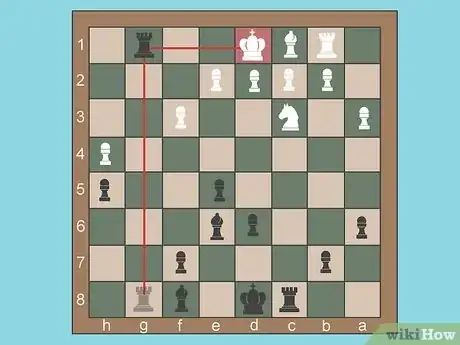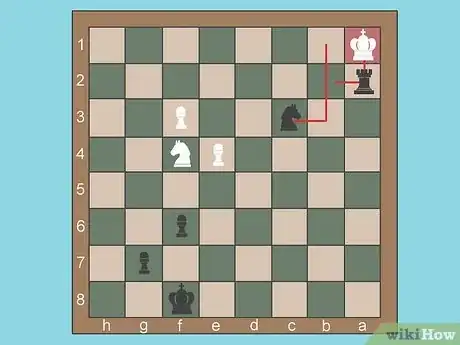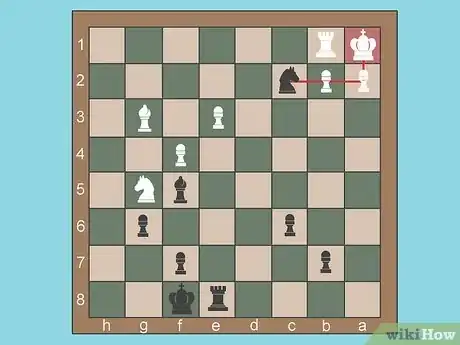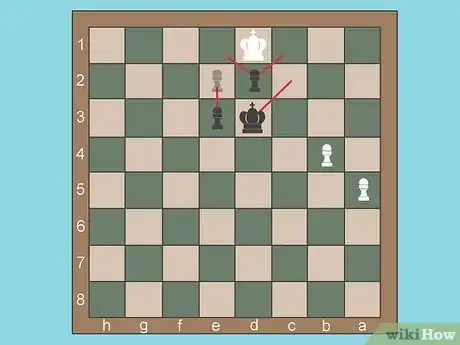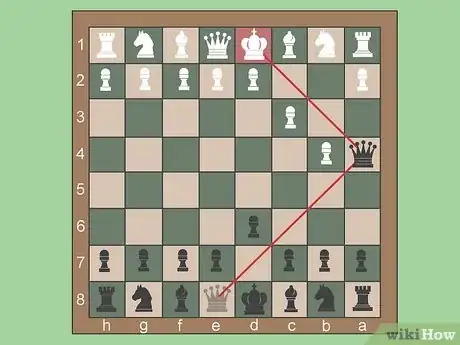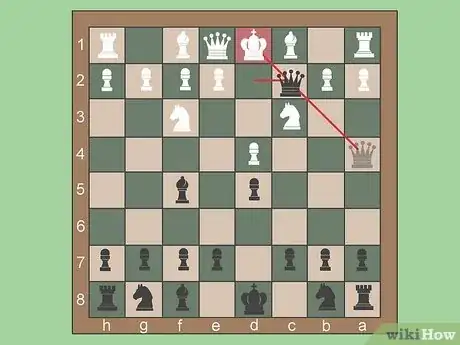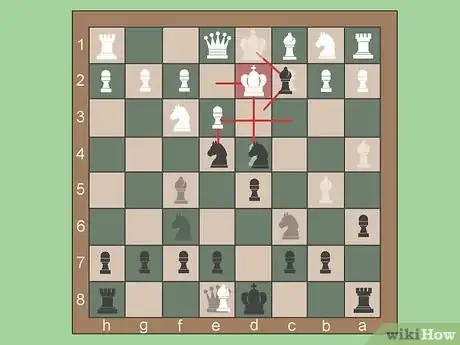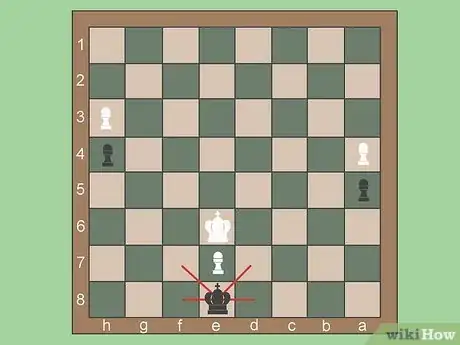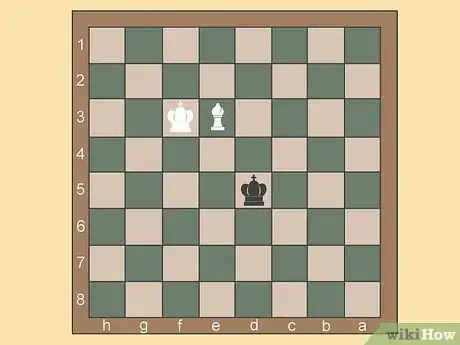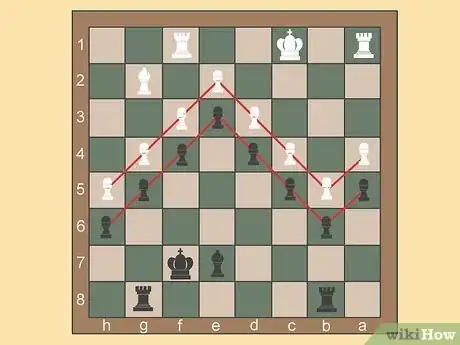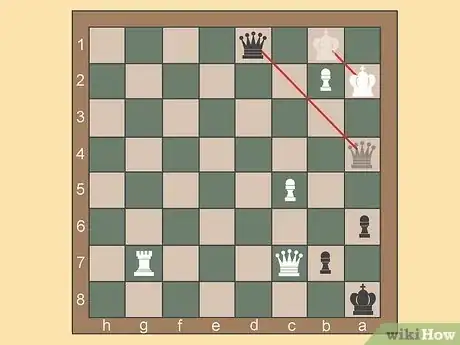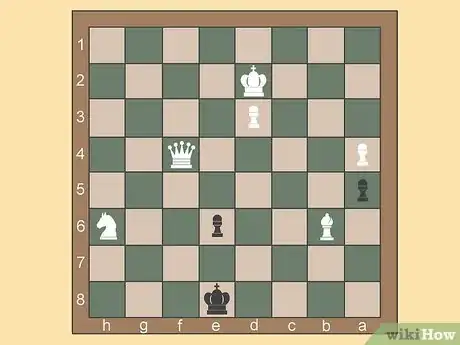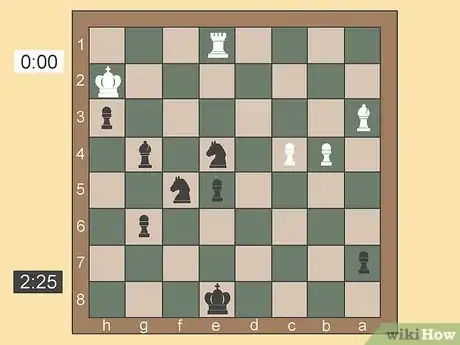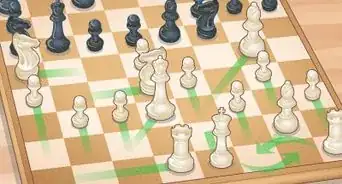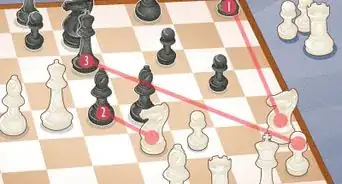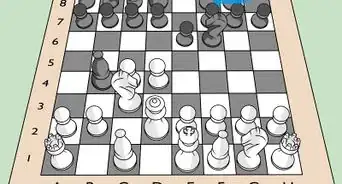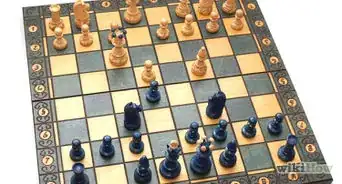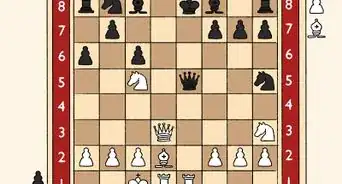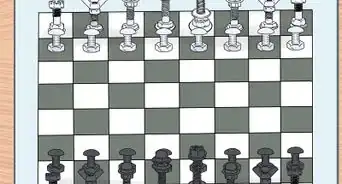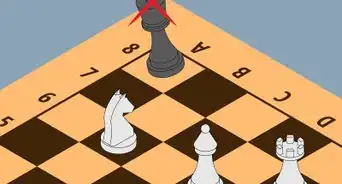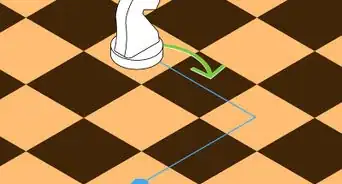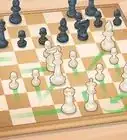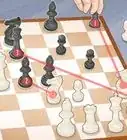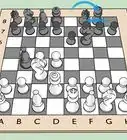This article was co-authored by Vitaly Neimer and by wikiHow staff writer, Hunter Rising. Vitaly Neimer is an International Chess Master and Certified Professional Chess Coach with over 15 years of training experience. He has been a part of the United States' Webster SPICE national chess champion team and is also a two-time Israeli national chess champion.
There are 14 references cited in this article, which can be found at the bottom of the page.
This article has been viewed 67,451 times.
Reaching the endgame in chess can be really tense as you try to outsmart your opponent. Whether you’re a beginner or an experienced player, it’s important to know the ways you can finish a match if you’re winning or losing. We’ll cover a few different patterns you can use to beat the other player, and then go over some other possible endings you might encounter!
Note: Some of these steps assume your opponent’s moves based on known chess strategies. Your opponent might play differently, so you may have to adapt your strategy.
Steps
Expert Q&A
-
QuestionHow can I checkmate fast?
 Vitaly NeimerVitaly Neimer is an International Chess Master and Certified Professional Chess Coach with over 15 years of training experience. He has been a part of the United States' Webster SPICE national chess champion team and is also a two-time Israeli national chess champion.
Vitaly NeimerVitaly Neimer is an International Chess Master and Certified Professional Chess Coach with over 15 years of training experience. He has been a part of the United States' Webster SPICE national chess champion team and is also a two-time Israeli national chess champion.
International Chess Master Try castling to the other side of your opponent to quickly end a game. This is called Opposite Side Castling.
Try castling to the other side of your opponent to quickly end a game. This is called Opposite Side Castling. -
QuestionWhat are some tips to win at chess?
 DonaganTop AnswererDevelop your pieces early by advancing them toward your opponent's side of the board. Do this first with your knights, bishops, and rooks, then your queen. Control the center of the board (the four middle squares) by attacking those squares with your pieces. Look for opportunities to exchange one of your weaker pieces (knight or bishop) for one of your opponent's stronger pieces (queen or rook). Try to promote your pawns by advancing them to your eighth rank and exchanging them for a stronger piece.
DonaganTop AnswererDevelop your pieces early by advancing them toward your opponent's side of the board. Do this first with your knights, bishops, and rooks, then your queen. Control the center of the board (the four middle squares) by attacking those squares with your pieces. Look for opportunities to exchange one of your weaker pieces (knight or bishop) for one of your opponent's stronger pieces (queen or rook). Try to promote your pawns by advancing them to your eighth rank and exchanging them for a stronger piece. -
QuestionIs there a checkmate faster than Fool's Mate?
 FlowerPower 💖Community AnswerNo, nobody has found a checkmate that's faster than Fool's Mate (it's already 2 moves, which is pretty fast!).
FlowerPower 💖Community AnswerNo, nobody has found a checkmate that's faster than Fool's Mate (it's already 2 moves, which is pretty fast!).
Warnings
- Watch out for threats from your opponent while you’re playing since they may try tricking you into taking a piece so they can take the advantage next turn.[18]⧼thumbs_response⧽
References
- ↑ https://www.chess.com/terms/checkmate-chess
- ↑ https://thechessworld.com/articles/training-techniques/13-checkmates-you-must-know/
- ↑ https://youtu.be/M7EEfa-5lOk?t=25
- ↑ https://thechessworld.com/articles/training-techniques/13-checkmates-you-must-know/
- ↑ https://thechessworld.com/articles/training-techniques/13-checkmates-you-must-know/
- ↑ https://www.businessinsider.com/how-to-win-chess-match-in-2-moves-2015-1
- ↑ https://www.chess.com/article/view/fastest-chess-checkmates
- ↑ https://youtu.be/3xuSaODwiHk?t=58
- ↑ https://youtu.be/wZzULdU0_Yo?t=25
- ↑ https://www.chesskid.com/terms/chess-stalemate
- ↑ https://www.chess.com/article/view/how-chess-games-can-end-8-ways-explained
- ↑ https://support.chess.com/article/352-how-do-draws-work
- ↑ https://www.chess.com/article/view/how-chess-games-can-end-8-ways-explained
- ↑ https://www.chess.com/article/view/when-should-one-resign
- ↑ https://www.mindmentorz.com/blog/2019/12/30/eight-ways-in-which-any-chess-game-can-end#
- ↑ https://www.chess.com/article/view/chess-endgames
- ↑ https://youtu.be/iswnLiBUzAY?t=7
- ↑ https://www.chess.com/article/view/chess-endgames
